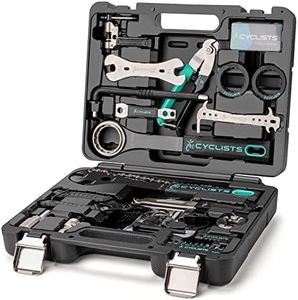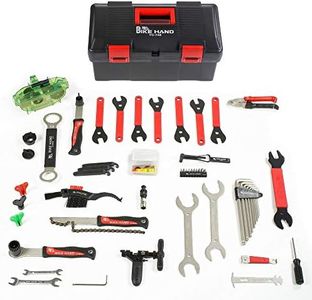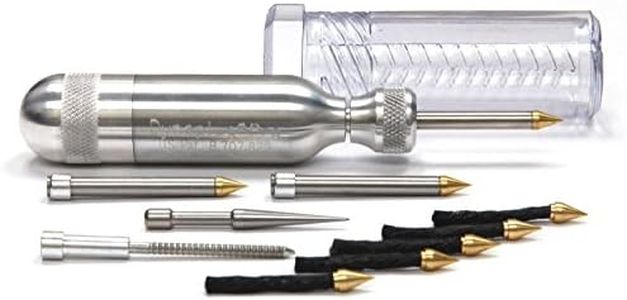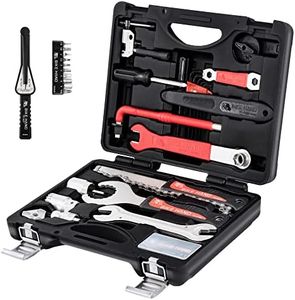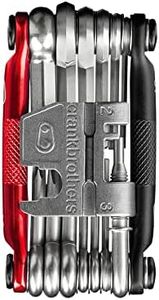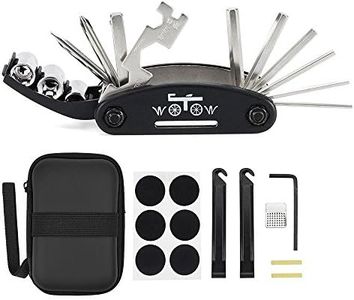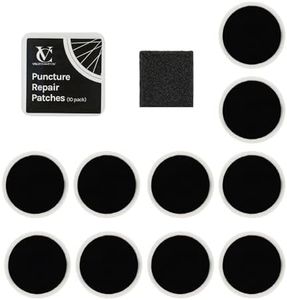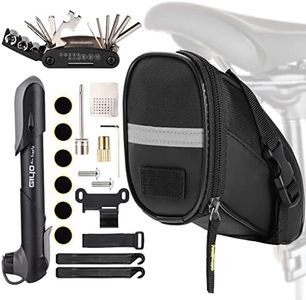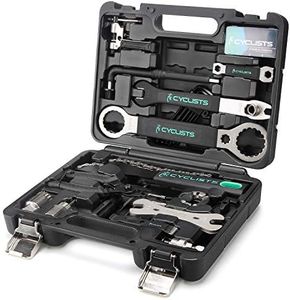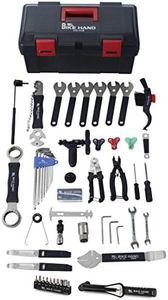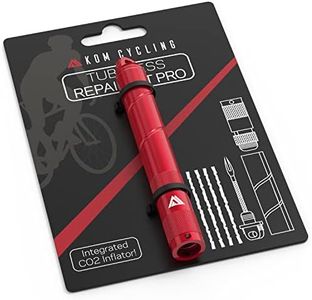We Use CookiesWe use cookies to enhance the security, performance,
functionality and for analytical and promotional activities. By continuing to browse this site you
are agreeing to our privacy policy
10 Best Bicycle Repair Kits
From leading brands and best sellers available on the web.Buying Guide for the Best Bicycle Repair Kits
Choosing a bicycle repair kit can make the difference between a smooth ride and being stranded with a flat tire or mechanical issue. Whether you’re a daily commuter, a weekend explorer, or an occasional rider, having the right kit can boost your confidence and keep minor mishaps from turning into major setbacks. To find the best repair kit for you, it’s helpful to understand what’s typically included and how each component caters to different riding needs and situations.Patch TypeThe patch type refers to the method used to fix punctures in your bike’s inner tube. There are generally two main options: glueless patches and glue-on (vulcanizing) patches. Glueless patches are very easy to use and convenient for quick repairs on the go, but may not be as durable for long-term use. Glue-on patches provide a stronger, long-lasting fix but require a bit more time and care during application. If you want something fast and simple for emergencies, glueless can be ideal, but if you regularly encounter punctures or ride in rough areas, glue-on patches may offer better peace of mind.
Tire LeversTire levers are tools that help remove the tire from your wheel to access the inner tube. They are usually made from plastic or metal; plastic levers are lightweight and gentle on rims, while metal ones are stronger but can scratch the rim if not used carefully. Most kits come with two or three levers. For most riders, sturdy plastic levers are sufficient and safer for the bike. Choose a kit with levers that feel solid and easy to grip if you do your own repairs.
Multi-tool InclusionA multi-tool is a compact tool that includes different wrenches, screwdrivers, and sometimes even chain tools. This allows you to adjust brakes, tighten bolts, or fix minor mechanical problems on the road. Multi-tools come in various sizes and with different tool counts, from minimalist models with a few Allen keys to large sets that cover nearly every bolt and screw on your bike. Think about the complexity of your bike and what types of adjustments you might actually do when out riding—if you’re not comfortable with mechanical fixes, a simple multi-tool is enough, but adventurous riders or those with more complex bikes might want more features.
Compactness and PortabilityHow small and light the kit is will determine if you can easily carry it in a saddle bag, backpack, or jersey pocket. Ultra-compact kits are great for short rides and minimalists, but may lack some useful tools. Larger kits can handle more repairs but are bulkier to bring along. Consider where you want to carry your kit and how much space you can spare—daily commuters and leisure riders often favor portability, while touring cyclists may choose a bigger kit for more coverage.
Pump or Inflation MethodSome kits include a small hand pump or CO2 inflator to re-inflate the tire after patching it. Hand pumps are reusable and don’t run out, but take more effort and time. CO2 inflators are very fast and easy to use, but require buying and storing cartridges and only provide single-use inflation. If you ride close to home, a kit without an inflator may be fine, but anyone who rides farther or in remote areas should choose a kit with a reliable way to put air back in the tires.
Extra Supplies & AccessoriesSome kits come with extras like sandpaper (to roughen the tube before patching), valve core tools, spare inner tubes, or even disposable gloves. While not always necessary, these items can make the repair process quicker and cleaner. Riders who value convenience or want to be especially prepared might look for kits that include these thoughtful extras.
